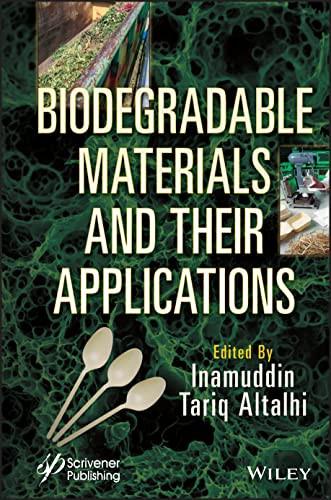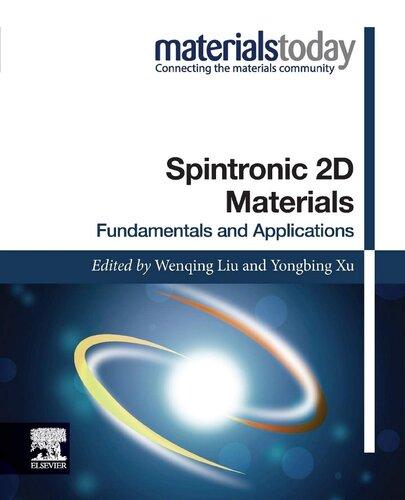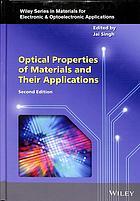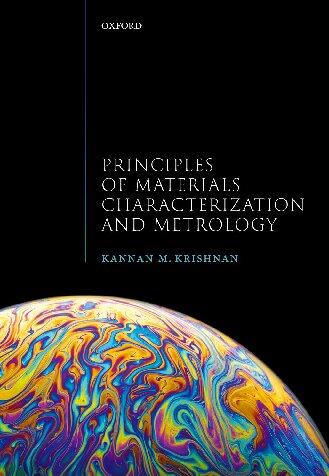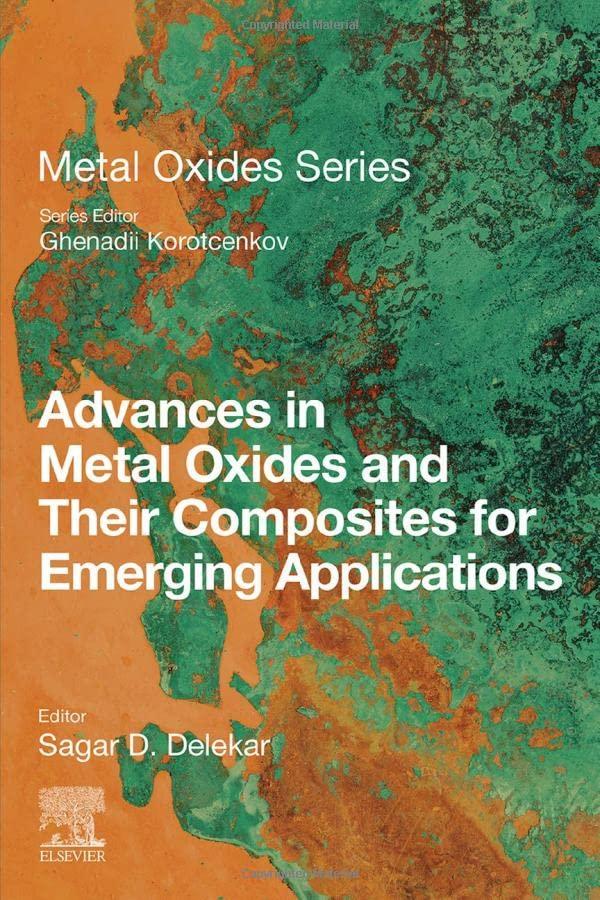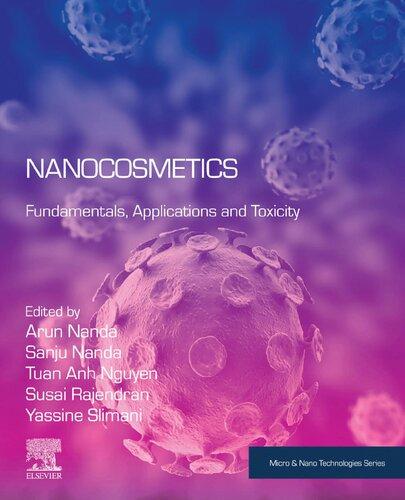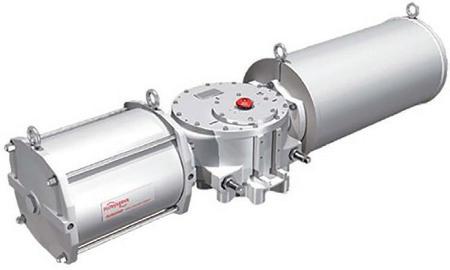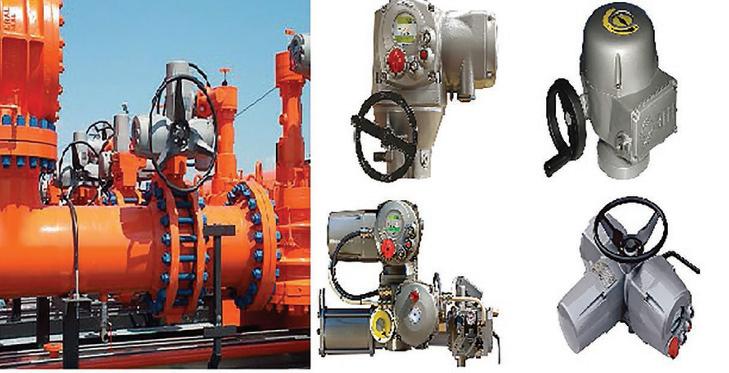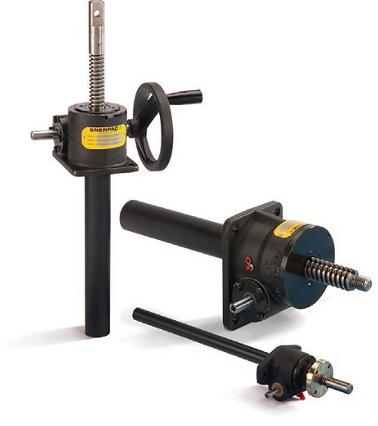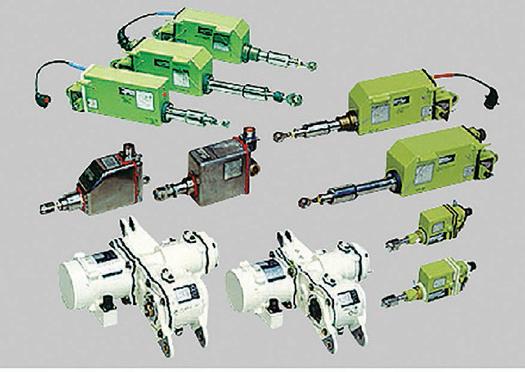Actuators
Fundamentals, Principles, Materials and Applications
Edited by Inamuddin, Rajender Boddula and Abdullah M. Asiri
This edition first published 2020 by John Wiley & Sons, Inc., 111 River Street, Hoboken, NJ 07030, USA and Scrivener Publishing LLC, 100 Cummings Center, Suite 541J, Beverly, MA 01915, USA © 2020 Scrivener Publishing LLC
For more information about Scrivener publications please visit www.scrivenerpublishing.com.
All rights reserved. No part of this publication may be reproduced, stored in a retrieval system, or transmitted, in any form or by any means, electronic, mechanical, photocopying, recording, or otherwise, except as permitted by law. Advice on how to obtain permission to reuse material from this title is available at http://www.wiley.com/go/permissions.
Wiley Global Headquarters
111 River Street, Hoboken, NJ 07030, USA
For details of our global editorial offices, customer services, and more information about Wiley products visit us at www.wiley.com.
Limit of Liability/Disclaimer of Warranty
While the publisher and authors have used their best efforts in preparing this work, they make no representations or warranties with respect to the accuracy or completeness of the contents of this work and specifically disclaim all warranties, including without limitation any implied warranties of merchantability or fitness for a particular purpose. No warranty may be created or extended by sales representatives, written sales materials, or promotional statements for this work. The fact that an organization, website, or product is referred to in this work as a citation and/or potential source of further information does not mean that the publisher and authors endorse the information or services the organization, website, or product may provide or recommendations it may make. This work is sold with the understanding that the publisher is not engaged in rendering professional services. The advice and strategies contained herein may not be suitable for your situation. You should consult with a specialist where appropriate. Neither the publisher nor authors shall be liable for any loss of profit or any other commercial damages, including but not limited to special, incidental, consequential, or other damages. Further, readers should be aware that websites listed in this work may have changed or disappeared between when this work was written and when it is read.
Library of Congress Cataloging-in-Publication Data
ISBN 9781119661146
Cover image:
Cover design by Russell Richardson
Set in size of 11pt and Minion Pro by Manila Typesetting Company, Makati, Philippines
Printed in the USA
10 9 8 7 6 5 4 3 2 1
3.4.1
4.12
5.4
5.2.2
5.2.3
5.4.1
5.4.2
5.4.3
5.4.4
5.4.5
5.5
viii Contents
6 Shape Memory Actuators
Sithara Gopinath, Dr. Suresh Mathew and Dr. P. Radhakrishnan Nair
6.1
6.2.1.2
6.2.1.3
6.2.1.4
7 Stimuli-Responsive Conducting Polymer Composites: Recent Progress and Future Prospects
Ajahar Khan and Khalid A. Alamry
7.1
7.2
7.3 Consequences of CPs
7.4 Synthesis or Polymerization of Most Widely Used CPs for Actuator Applications Such as PPy and PANI
7.4.1 Polymerization of Polypyrrole
7.4.2 Synthesis of PANI
7.4.3 CPs Composites as Actuators
7.4.4 CPs as Electrodes for Actuators 169
7.4.5 Tunable CP Membrane-Based Actuators 169
7.4.6 Nanoporous Gold/CPs Composite-Based Metallic Muscles 170
7.4.7 CP-Based Nano-Fibrous Bundle for Artificial Muscles 170
7.4.8 CP as Fibrous Actuator 171
7.4.9 CPs Composite-Based Flapping Wing Actuator 172
7.4.10 CPs Composite-Based Micro-Gripper System 173
7.5 Summary and Future Perspective of CPs Composites-Based Actuators
8 Fluid Power Actuators 187
Mohanraj Thangamuthu, Tamilarasi Thangamuthu, Gobinath Velu Kaliyannan, Moganapriya Chinnasamy and Rajasekar Rathinasamy
8.1 Introduction 187
8.2 Classification of Actuators 188
8.2.1 Linear Actuator or Cylinders 188
8.2.2 Rotary Actuator or Motors 189
8.2.3 Semi-Rotary Actuators 189
8.3 Hydraulic Actuator 189
8.4 Pneumatic Actuator 190
8.4.1 Single-Acting Cylinders 191
8.4.1.1 Gravity Return SAC 191
8.4.1.2 SAC With Spring Return 192
8.4.2 Double-Acting Cylinder 193
8.4.2.1 DAC With Piston Rod on One Side 193
8.4.2.2 DAC With Piston Rod on Both Sides 193
8.5 Telescopic Cylinder 194
8.6 Tandem Cylinder 195
8.7 Research Towards the Applications of Pneumatic Fluid Power Actuators 195
8.7.1 Novel Micro-Pneumatic Actuator for MEMS 197
8.8 Research Towards the Applications of Hydraulic Fluid Power Actuators 201 References 206
9 Conducting Polymer/Hydrogel Systems as Soft Actuators 211
Yahya A. Ismail, A. K Shabeeba, Madari Palliyalil Sidheekha and Lijin Rajan
9.1 Introduction 211
9.2 Conducting Polymer as Actuators: A Brief Description 212
9.2.1 Mechanism of CP Actuation 213
9.2.2 Merits and Demerits of CP Actuators 216
9.3 Conducting Polymer/Hydrogel Systems as Actuators 217
9.3.1 Importance of Conducting Polymer/ Hydrogel Systems 217
9.3.2 Conducting Polymer/Hydrogel-Based Actuators in Literature 217
9.3.3 Fabrication of Conducting Polymer Hydrogels 217
9.3.3.1 Polymerization CP Within a Prefabricated Hydrogel Matrix 222
Contents
9.3.3.2 CP-Hydrogels Formed by Blending of CP with Hydrogel
9.3.3.3 Polymerization of CP in the Presence of Matrix Polymer Solution/Dispersion 222
9.3.3.4 CP-Hydrogels Formed from Mixed Precursors
9.3.3.5 Synthesis of CP Gels by Cross-Linking with Dopant Molecule
9.3.4 Polyaniline/Hydrogel Systems as Actuators
9.3.5 Polypyrrole/Hydrogel Systems as Actuators
9.3.6 Polythiophene/Hydrogel Systems as Actuators
Preface
An actuator is a kind of part of a machine that is responsible for moving and controlling a mechanism/system. It can also be defined as something that converts energy into motion. The common types of actuators in automation include pneumatic, hydraulic, electromechanical, and mechanical actuators. Current technology has certain common needs for actuators designed for automotive, aeronautics, biomedical, robotics, and spatial applications. Today’s technology aims towards designing of nano-, micro-, and macroscales for mechanical devices that can change their shape concerning the environmental conditions. The attention on developing actuating devices has been escalating in the past decade as a consequence of soaring demand for biomimetic multifaceted mechanisms such as implantable neuronal devices, animal-like robots, tissue substitutes, etc. In recent years, all over the world, researchers have concentrated on the development of new kinds of actuators owing to increasing demand for high-precision positioning technology in the areas of scientific and industrial research.
Actuators: Fundamentals, Principles, Materials and Applications aims to explore cutting-edge technology on actuators. The chapters discuss basics, principles, use of materials, types of actuators, and applications of actuators in mechatronics, robotics, artificial muscles, and high-precision positioning technology. It also includes actuators based on hydrogels, stimuli-responsive electroactive polymers, and smart-polymers. The challenges and prospects are also discussed. The book incorporates industrial applications and will fill the gap between the lab scale and practical applications. It will be of interest to engineers, industrialists, undergraduate and postgraduate students, faculty, and professionals. Based on thematic topics, the book contains the following nine chapters:
Chapter 1 discusses the piezoelectric actuators along with their applications in various fields. It is concluded that owing to the special properties, the piezoelectric actuators attracted much attention compared to other
xii Preface
actuators, and research is going on to introduce new kinds of piezoelectric materials for actuator applications.
Chapter 2 reveals some of the important parameters that are to be considered while designing a shape memory alloy (SMA) actuated system. The design parameters will enable us to build an efficient control mechanism and also give a broad range of basic elements that are to be decided before the developing stage, and the parameters required are quantified.
Chapter 3 captures actuators in the mechatronics system or robotics. This chapter discusses in detail the various types of actuators such as pneumatic, hydraulic, mechanical, and electromechanical. The various components of actuators, as well as applications of actuators, are also stated.
Chapter 4 discusses the use of stimuli-responsive hydrogels for the development of soft-actuators with main applications in automated biomedical devices due to its tissue-equivalence. Important concepts about the properties, synthesis, and characterization of hydrogels and their respective soft-actuators are presented. This chapter can help as a practical guide to consulting current fundamental reactions and manufacturing methodologies.
Chapter 5 reviews various polymer-based chemical sensors for the detection of different parameters such as gas, vapors, humidity, pH, and ions. The exploration of numerous kinds of polymers, along with the utilization of different techniques with their merits and demerits, is also elaborately discussed. This chapter also highlights the future perspective of polymerbased chemical sensors.
Chapter 6 deals with various shape memory actuators, which mainly include shape memory alloy (SMA) actuators and shape memory polymer (SMP) actuators. The classification of shape memory effects (SME), types of actuators, advantages, applications, and various design mechanisms, or strategies of these two shape memory materials (SMM) is also discussed in detail.
Chapter 7 reports the current progress of stimuli-responding conducting polymer (CP) composites to understand the mechanical behavior of these materials concerning electrical-, photo-, and thermo-responsive stimuli. An overview of the most widely used CPs composite materials with their
Preface xiii
uses and operational mechanisms, as well as a specified account of CPs as next-generation actuators, is also presented.
Chapter 8 discusses the various types of fluid power actuators like single and double acting cylinders, telescopic cylinder and tandem cylinders used for industrial applications. This chapter also discusses the application of fluid power actuators for robotics, legged robotics and MEMS application.
Chapter 9 provides an overview of conducting polymer/hydrogel systems as soft actuators, conducting polymer actuators and their actuation mechanism, their merits and demerits followed by highlighting the progress of CP/hydrogel actuators fabricated using polypyrrole, polyaniline and polythiophene with various hydrogels, and outlines the factors affecting their actuation performance.
Key Features
1. A comprehensive and self-contained text covering all aspects of the multidisciplinary fields of actuators
2. Contains contributions from noted experts in the field
3. Provides a broad overview of actuators
4. Deliberates cutting-edge technology based on actuators
Editors
Inamuddin
Rajender Boddula
Abdullah M. Asiri
Piezoelectric Actuators and Their Applications
N. Suresh Kumar1*, R. Padma Suvarna1, K. Chandra Babu Naidu2†, S. Ramesh2, M.S.S.R.K.N. Sarma2, H. Manjunatha3, Ramyakrishna Pothu4 and Rajender Boddula5
1Department of Physics, JNTUA, Anantapuramu, India
2Department of Physics, GITAM Deemed to be University, Bangalore, India
3Department of Chemistry, GITAM Deemed to be University, Bangalore, India
4College of Chemistry and Chemical Engineering, Hunan University, Changsha, China
5CAS Center for Excellence in Nanoscience, National Center for Nanoscience and Technology, Beijing, China
Abstract
Piezoelectric actuators (PEAs) are a type of microactuators which mainly use the inverse piezoelectric effect to produce small displacement at high speed by applying voltage. This chapter includes the detailed discussion on piezoelectric actuators in the direction of industrial benefits. In addition, the classification of piezoelectric actuators is made. Especially, the piezoelectric actuators showed the MEMS (microelectromechanical systems) applications at larger extent. We elaborated different piezoelectric materials such as lead and lead zirconium-based compounds for actuator applications. In view of this, few parameters like memory, domain rotation, etc., are considered for justifying the actuator applications. The importance of these actuators towards robotics is also elucidated.
Keywords: Actuators, piezoelectric materials, hydraulic actuator, journal bearings, machines
*Corresponding author: drsureshkumarnagasamudram@gmail.com
†Corresponding author: chandrababu954@gmail.com
Inamuddin, Rajender Boddula and Abdullah M. Asiri (eds.) Actuators: Fundamentals, Principles, Materials and Applications, (1–16) © 2020 Scrivener Publishing LLC
1.1 Introduction
A part of a device which moves or controls the mechanism is called an actuator. Example is an electric motor which converts a control signal to mechanical action. An actuator is one which converts energy into motion. This energy may be hydraulic, pneumatic, electric, thermal, mechanical, or even human power [1]. Whenever a control signal is received, actuator converts the energy of the signal into mechanical motion. The control system may be a fixed mechanical/electronic system or a software-based printer device/robot. Based on the type of control system or energy, actuators are classified into different types which are hydraulic, pneumatic, electrical, mechanical actuators, etc.
1.2 Types of Actuators
A hydraulic actuator uses hydraulic power for the mechanical process. Here, the output will be a linear, rotatory, or oscillatory motion. In hydraulic systems, energy is transmitted with the help of pressure of fluid in a sealed system. It has advantages like efficient power transmission, accuracy, and also flexible in maintenance. Usage of these systems is safe in chemical plants and mines as they do not produce any sparks. Here, leakage of the fluid is the major drawback. Because, once the fluid leaks, it may catch fire or leads to serious injuries when it bursts [2]. Examples are brakes in cars/trucks, wheelchair lifts, hydraulic jacks, and flaps on aircrafts, etc. Figure 1.1 represents one type of hydraulic actuator.
A pneumatic actuator rotation is shown in Figure 1.2. It uses energy in the form of compressed air at high pressure to produce motion. This actuator is mainly advisable in main engine controls for swift starting and stopping. These actuators are economical, lightweight, less maintenance, and simple when compared to other actuators. The disadvantage with this actuator is application-specific that is an actuator sized for a specific purpose cannot be used for other applications [3, 4].
An electric actuator uses a motor for converting electrical energy into mechanical torque. This is used in multi-turn valves. Figure 1.3 shows different types of electric actuators. As there is no involvement of either fossil fuels or oils these actuators are the cleanest and easily available ones [5, 6]. Another type of actuator is supercoiled polymer (SCP) or twisted and coiled polymer (TCP) actuators which use electric power for actuating. These are made up of silver-coated nylon and gold and appear helical like a
1.1
1.2
1.3
Figure
Hydraulic actuator.
Figure
Pneumatic actuator.
Figure
Electric actuators.
splicing. These are constructed by twisting like nylon thread such as fishing line. They serve as bicep muscle to control the motion of arms in robots. Because of electrical resistance, electrical energy gets converted into thermal energy also called Joule heating. When the temperature of this actuator is increased due to joule heating, counteraction of the polymer takes place resulting in contraction of the actuator [7].
Mechanical actuator converts one type of motion into another like rotatory into linear. Example for this type is rack and pinion. This type of actuators depends on constitutional components like gears and rails, pulleys, and chairs. In order to use actuators in the fields of agriculture for fruit harvesting and biomedicine in robotics soft actuators are being developed. Because of amalgamation of microscopic changes at the basic (molecular) level into a macroscopic distortion, soft actuators generate flexible motion. Figure 1.4 represents mechanical actuator.
Electromechanical actuators are nothing but mechanical actuators in which the control signal is given by an electric motor which converts the rotatory motion into linear displacement. These actuators work on the inclined plane concept. The required inclination is provided by the threads of a lead screw. It acts as a ramp and converts small rotational force into linear displacement. Based on parameters like operation, speed increased load capacity, mechanical efficiency, etc., different EM actuators are designed which are shown in Figure 1.5. The common design consists of a lead screw passing through the motor. The lead nut is the only moving part while the lead screw remains fixed and non-rotating. When the motor rotates, the lead screw either extends outwards or retracts inwards. By using alternating threads on the same shaft, different actuators are designed. Actuators begin on the lead screw and provide a higher adjustment capability between the starts and the nut thread area of contact, influencing the extension speed and load capacity.
The density of motion of the nut is determined by the lead screw and by coupling the linkages to the nut. Usually, in many cases, screw is connected to the motor. Based on the amount of the loads, the actuator is expected to move various motors like dc brush, stepper, induction motors, etc. Coming to its advantages, the person handling this actuator can have complete control over the movement. They can control the velocity and position accurately without switching off the device or when the device is in running state, the force and motion profile can be changed by changing its software. These actuators consume power only when they are in operation. Low maintenance, high efficiency, and being environmentally friendly make these actuators a potential candidate in hazardous areas.
1.4 Mechanical actuator.
1.5 Electromechanical actuators.
These are used in packaging, food, energy process control, construction, and automation industry.
1.3 Piezoelectric Actuators
In recent years, all over the world, the researchers concentrated on the development of new kinds of precision actuators owing to increase in demand for high precision positioning technology in the areas of scientific
Figure
Figure
and industrial research [8–15]. In specific, piezoelectric actuators (PEAs) are gaining much attention due to their novel properties like fast response, compact structure, high precision, etc. PEAs are a type of microactuators which mainly uses the inverse piezoelectric effect to produce small displacement at high speed by applying voltage [16–20]. In recent years, these PEAs have enhanced their area of applications, upgraded synthesis techniques [21], and also improved properties have led to different types of designs which can accomplish large displacements with reasonable voltages even though maintaining comparatively large stiffness [22, 23]. In this chapter, we discussed different types of PEA and their applications in various fields.
Adriaens et al. [24] introduced the electromechanical model for PEAs. They improved the usage of nonlinear first-order differential equation to explain the effect of hysteresis and the use of structural damping and partial differential equation (PDE) to explain the mechanical behavior. Furthermore, they concluded that the hysteresis effect and disseminated nature of PEA can be circumvented through proper design of the positioning mechanism and also varying traditional voltage steering for charge steering. Hence, the simplified mechanism (piezo-actuated) is very much appropriate as a controller design basis.
Cattafesta et al. [25] discussed the development of piezoelectric unimorph flap actuators for active flow control. They designed this model with the help of composite beam model (CBM) along with optimization method. Even though, CBM cannot capture the total information about the behavior like anticlastic curvature of the actuator. Anyhow, this type of simple model is suitable for understanding the relationship between the design variables and performance of the actuator. Nevertheless, to study the complex geometries, a finite element or analytical plate model is much appropriate. They reported that PEA is designed by using optimized model. In addition, they also discussed a simple application, which is the controlling of flow from a backward-facing step where the actuator is fixed at origin of the shear layer. Fig. 4 in reference [25] shows the actuator installation in back word-facing step. Furthermore, we know that the fluid-structure model assumed that the displacement of the actuator is proportional to the induced streamwise speed trepidation in the flow. Quasi-static model also describes that, due to quasi-static motion of the actuator, the shear layer effectually moves in vertical direction. Finally, they reported that the developed model leads to a proportionate correlation between the incoming boundary layer, streamwise speed variations induced by the actuator and the displacement of
the flap tip which is very much suitable for the designing actuators for flap control applications.
Based on the theory of elasticity, Shi [26] investigated and compared the bending behaviors of a functional gradient curved piezoelectric actuator (FGPEA) and a bi-morph curved piezoelectric actuator (BPEA). He reported that the exact solutions of both electrical and mechanical fields are attained. Besides, when the curved FGPEA is subjected to an external electric filed, there exist non-zero internal stresses whereas in flat FGPEA no stress is observed. However, the deflection of the FGPEA is somewhat lesser than that of BPEA but the considerable reduction in internal stresses is noticed in FGPEA. Taotao Zhang and Zhifei Shi [27] reported the similar kind of outcomes in FGPEA and piezoelectric curved multi-layered actuators.
Kadota and Morita [28] fabricated a unimorph shape memory piezoelectric actuator (SMPEA) by using a soft PZT. A SMPEA is an actuator which can exhibit a piezoelectric displacement without an external voltage. These actuators have two stable states at zero voltage which are poled state and depoled state. Mainly, the driving principle in SMPEAs depends on reorientation of non 180o domains. They reported that the investigations on the prepared SMPEAs revealed that the fatigue properties were studied by continuous switching of cycling polarization, owing to reorientation of non 180o domains and the prepared SMPEAs exhibited superior properties when compared to existing actuators [29, 30]. During early stages, the fatigue is caused by domain pinning while in later stages it is caused by damaged layer. However, the observed shape memory displacement is not constant, which varies as function of time.
Yoshida et al. [31] prepared a high AR PZT (aspect ratio lead zirconate titanate) structures via nanocomposite sol-gel technique. Further, the prepared material is sandwiched between two Pt electrodes (prepared by ALD and photolithographic techniques) to fabricate an actuator for MEMS (microelectromechanical systems) applications. They successfully presented the demonstrations of both unimorph and bimorph actuation. The outcomes revealed that the d33 coefficient about 20 pC N−1 and a 10-μm lateral displacement is observed for 500-μm actuator in bimorph actuation. They reported that the developed actuator occupies small area and generates similar displacement compared to conventional electrostatic combo-drive actuators; therefore, it can be for diverse appliances in MEMS.
Li and Chen [32] introduced a new hysteresis model for describing the behavior of hysteresis in PEA accurately. They reported that the proposed
model is an online adaptive rate-dependent hysteresis model which exhibits high efficiency and precision when compared with the offline model. This new model shows excellent rate-dependent property which is in well agreement with the actual hysteresis behavior in PEA. In addition, the experimental outcomes revealed that the hysteresis in PEA can be evidently controlled and allows observing the position and performance accuracy of the order of 10-nm range. One more advantage of the proposed model is it can track the non-periodic random movement. From the results of the experiment, it is evident that the proposed model using PEA can be efficiently useful for attaining ultra-precession of the motion control.
Jiang et al. [33] proposed a novel hybrid photovoltaic/piezoelectric actuation mechanism. They reported that PbLaZrTi (PLZT) ceramic materials are utilized as a photovoltaic generator to drive PEA. The fruitful model of this new mechanism of actuation is presented and verified experimentally. Some significant characteristics of the newly developed model are analyzed and reported that there exists no hysteresis between deformation which exists in PEA and applied voltage. With the help of multi-patch PbLaZrTi generator, one can improve the response speed and saturated voltage to drive the PEA, and by using high light intensity, the initial voltages which arise through a logical switch between the PEA and PLZT can be improved. Hence, this new model can be useful as control at high frequencies.
Orszulik and Shan [34] reported an output feedback integral control of the PEA by considering the effect of hysteresis. In the outcome, they described that, in the proposed model, the nonlinear part represents the hysteresis with respect to linear part. In addition, the Lipschitz condition is derived by considering the Prandtl-Ishlinskii model as the hysteresis. With respect to frequency response, the linear parameters of the proposed model are obtained by using experimental single-axis PEA while the hysteresis model parameters are attained by using the procedure of nonlinear least squares. Finally, they proposed that the derived maximum integral gain of the PEA drives the experimental system which reveals that the system with closed loop is certainly stable.
Continuing the development of piezoelectric actuators, Patil et al. [35] introduced a new type of piezoelectric actuator and sensor which is integrated into the structures to detect the bolt loosening in that frame structures. By considering the dynamic responses from undamaged and damaged structures, the location of damage can be observed and estimated with the help of FRF (frequency response function) method together with PEA. From the outcomes of the simulation work (carried out with the help of MATLAB and ABAQUS) shown in Table 5 of the reference [35], it is
evident that the PEA can be effectively used to find the damages caused by the bolt removal.
Tuma et al. [36] reported that how the characteristics performance of the journal bearing [JB] is affected by the active vibration control (AVC) by piezo-actuators. Before publishing this article, many researchers have shown interest to the active control of the JBs by using GMM (giant magnetostrictive material) [37] and AMB (active magnetic bearings) [38]. From the experiments carried with GMM, Tuma et al. [36] stated that the problem arises at high rpm of around 1,700 owing to instability of the JB. Also, they published that, at low rpm of about 350, the instability did not arise. Hence, AVC is not intended at eradicating the instability of JBs but only on placing the shaft axis. The development of piezoelectric actuators has been started from early 1990s [39] which can be used to control the rotating machines. In addition, the linear piezoelectric actuators can produce large amount of force in a small track. The main advantage of the piezoelectric actuators compared to AMB is unchanged bearing bushing mounting stiffness in the journal bearings. Fig. 2 and Fig. 3 in the reference [36] shows the actively controlled journal bearing and test bench. Finally, they concluded that the usage of piezoelectric actuator in journal bearing causes the increase in stable operating range, losses due to friction is reduced and radial stiffness is increased.
Long et al. [40] implemented a novel synthesis technique, i.e., combining the conventional SSR (solid-state reaction) with gel-precursors mixing technique to prepare lead-free BCTS (Ba1−xCax) (Ti0.91Sn0.09)O3) ceramic materials. They reported that the prepared ceramic materials exhibit high performance with uniformly distributed grain size and boundary. In addition, the electrical properties are augmented, especially for x = 0.03 compound the value of d33 coefficient is 620 pC/N, dielectric constant is 14,500 and high dielectric tunability (>86.97%) are observed. Besides, the prepared lead-free ceramic actuators exhibit large displacement at low operating voltages which indicates that the prepared ceramics have potential appliances in multilayer piezoelectric devices.
Li et al. [41] investigated the micro-displacement mechanism (electrostrictive and inverse piezoelectric effect) of the PEAs and also the reversal of electric domain due to ferroelectric effect. From the results, it is clear that the displacement mainly arises due to ferroelectric and inverse piezoelectric effect, whereas the electrostrictive is almost ignored (extremely weak) at microlevel. They also observed that there is a linear relationship between the displacement and voltage in the PEA in inverse piezoelectric effect and hysteresis occurs in ferroelectric effect. In addition, some
irreversible non-180° domains are the basis of the hysteresis of the PEA. The proposed model improves the accuracy of PEAs in practical applications. Recently, owing to increased usage of mechatronic systems, researchers concentrated on designing of highly automated systems. FDI (fault detection and isolation) is a key concern to confirm their operations. Continuing this, Ramakrishnan Ambur and Stephan Rinderknecht [42] designed a parameter estimation method in order to detect the unbalanced faults (phase, magnitude, and location) in a rotating machine with PEA. These actuators can also be acted as sensors due to intrinsic connection between their mechanical and electrical properties. From these self-sensing actuators, reconstruction of mechanical deflection takes place and also these are used to find unbalance in rotor system. The WLS (weighted least squares) method is used to improve the robustness of the estimations against outliers in measurement. Fig. 11 in reference [42] exhibits the detection of unbalances in real test bench. They reported that all the unbalanced faults are successfully detected in case of stationary tests while in case of closedloop and transient runs test only the magnitude is detected.
Ciou and Lee [43] designed a controllable preload spindle mechanism for the tools in machines and tested using a single PEA. Fig. 1 in reference [43] shows the wedge-shaped spacer ring which is enabled with the help of a PEA to produce uniform axial displacement to vary the preload on bearings. The relationship between the stiffness and displacement of the spindle is evaluated by using load-displacement model. From the results, it is clear that the increased preload causes the reduction in vibrational amplitude and increase in temperature of the bearing. So, the designed model is inexpensive and viable approach for controlling preload spindles.
Alireza et al. [44] investigated on nonlinear dynamics and statics of a slightly curved Euler-Bernoulli capacitive microbeam (bi-stable microelectromechanical system) enclosed between two piezoelectric layers. They reported that Hamilton’s principle is used to derive the governing equation of motion. In addition, the size effect is formulated via strain gradient theory which reduced to set of differential equations depending on Galerkin approach. Moreover, the proposed model is responsible for nonlinearities owing to curvature, electrostatic loading and stretching at midplane. Owing to the application of DC voltage on the piezoelectric layers, the change in static bi-stability band of the system takes place and also the pull in and snap-through instabilities can be ordered. Furthermore, primary resonance (Fig. 13 in reference [44] exhibits the influence of piezoelectric actuation) is categorized with the help of the shooting method and Floquet
theorem is used to describe limit cycles stability. Finally, the dynamic snap-through band could be changed effectively by applying proper piezoelectric actuation. The designed model can be applied in designing micro arch-based bandpass filters, smartwatches, etc.
Deng et al. [45] proposed a PEA operating at two actuating modes (direct and inertial actuation) and tested. They reported that the proposed PEA exhibits sandwich structure with large resonant frequency which is different from other PEAs (flexure structures). In addition, using scanning laser Doppler vibrometer, the resonance frequency is observed to be 12,720 Hz. Besides, when the PEA is operated at direct mode, DC signal is applied and attained a displacement resolution of 1.25 cm with a highest scan-rate and range of around 190 Hz and 3685 nm. Furthermore, in inertial mode of actuation, there is linear relation among the voltage and speed which may be used as linear dynamic control of the speed. Here, the achieved maximum speed is around 14.439 × 10−6 m/s and thrust force is 1.66 N. Hence, these types of sandwich structured piezoelectric actuators provide a linear driving with extended stroke (inertial actuation mode) and maximum scan rate and nanometer resolution (direct actuation mode) which have proper application possibilities in the areas of biological manipulation and nano-scanning.
Lallart et al. [46] proposed a simple model for predicting the quasi-static operations, i.e., the relationship between strain and voltage in PEAs. Fig. 6 in reference [46] shows the block diagram of the proposed model. They reported that in the proposed model, an electrochemical coupling (butterfly-shaped) lies in between the strain and voltage derivatives. In addition, this model works in both unipolar and symmetric cycles. The experimental outcomes exhibited that the unipolar PEA is well matched with the theoretical values. In general, the proposed model can also be applied for other domains like hydraulics, magnetic actuation magnetism, etc.
Lu et al. [47] investigated a sensorless (self-sensing) control of MPEA (multilayer piezoelectric actuator) displacements, particularly for lowspeed operations (below 100 Hz); however, for high-speed operations, the proposed model monitors whether the operation is at resonance or not.
Ye et al. [48] designed a novel joint-arm (ring-beam) PEA for manipulator, which works on the principle of piezoelectric excitation and with the help of converse piezoelectric effect the actuator is driven directly by the frictional force induced at joint interface. They reported that the experimental outcomes revealed the response time (start up and shut down) of the developed actuator is very small, of the order of 31 ms and 21 ms. In addition, the angular speed of the model reaches 45.90 deg/sec with a resolution of
0.015 deg. From the obtained results, it is clear that, due to high resolution and fast response rate, proposed actuator can be utilized to develop a manipulator with high precision and good mobility. Wang et al. [49] proposed a new type piezoelectric inertial rotatory motor which works on the principle of slip-slip mechanism for actuating the MUVs (micro underwater vehicles). Fig. 16 and Fig. 17 in reference [49] exhibit the experimental outcomes of the proposed motor. Masoud Soltan Rezae et al. [50] introduced a nonlinear model by regulating piezoelectric microwires with the capacity to adjust the stability conditions to enhance characteristics of the system. The appropriate adjustments are instigated electrostatically by actuating or applying a small piezo voltage to enhance the properties of the system such as tuning applications, controllability, etc. They reported that the experimental outcomes of the present model are helpful in the development of new advanced actuated microdevices. Tian et al. [51] designed a novel U-shaped stepping PEA containing low motion coupling. In this model, the actuator contains 4-PAUs (piezoelectric actuation units); among them, two acts as clamping and remaining two acts as pushing units. Fig. 3 in reference [51] shows the operating principle of the proposed actuator. They reported that the proposed actuator can be employed in the areas of precision zoom lens adjustment system, precision positioning platform for microscope, precision feeding of machine tool, etc.
In general, charge measurement technique is used to estimate the position of PEAs. In this, linear charge position property is helpful in finding the actuator position. However, charge-position relation is non-linear in low impedance actuators besides internal resistance of the piezoelectric material induces some leakage of charge. Due to this, the traditional charge-based approaches are not applicable for low impedance actuators. To overcome these problems, Soleymanzadeh et al. [52] introduced a new model in which they considered the leakage of charge and other uncertainties such as dielectric absorption, current biases, etc., due to sensor fault. In the proposed method by employing the FDI (fault detection and isolation) based robust observer, the position of the actuator is estimated properly and experimental results showed the efficiency of the proposed model for the estimation of position in multi-frequency and quasi-static cases with an error of 0.1453 μm and 0.1907 μm. Therefore, the proposed model may be applicable for low impedance actuators. In this chapter, a modest attempt has been made on the piezoelectric actuators from this; it is clear that due to their special properties, the piezoelectric actuators attracted much attention compare to other actuators.
1.4 Conclusions
We discussed about the piezoelectric actuators along with their applications in various fields. It was concluded that, owing to the special properties, the piezoelectric actuators attracted much attention compare to other actuators and research is going on to introduce new kinds piezoelectric materials for actuator applications.
References
1. About Actuators. www.thomasnet.com. Archived from the original on 201605-08. Retrieved 2016-04-26.
2. What’s the Difference Between Pneumatic, Hydraulic, and Electrical Actuators? machinedesign.com. Archived from the original on 2016-04-23. Retrieved 2016-04-26.
3. What is a Pneumatic Actuator?. www.tech-faq.com. Archived from the original on 2018-02-21. Retrieved 2018-02-20.
4. Pneumatic Valve Actuators Information/IHS Engineering 360. www.globalspec.com. Archived from the original on 2016-06-24. Retrieved 2016-04-26.
5. Tisserand, O., “How does an electric actuator work?”. Archived from the original on 2018-02-21. Retrieved 2018-02-20.
6. Electric & Pneumatic Actuators. www.baelzna.com. Archived from the original on 2016-04-30. Retrieved 2016-04-26.
7. Jafarzadeh, M., Gans, N., Tadesse, Y., Control of TCP muscles using Takagi–Sugeno–Kang fuzzy inference system. Mechatronics., 53, 124–139, 2018. https://doi.org/10.1016/j.mechatronics.2018.06.007
8. Chen, M.Y., Tsai, C.F., Fu, L.C., A novel design and control to improve positioning precision and robustness for a planar maglev system. IEEE Trans. Ind. Electron., 66, 4860–4869, 2019. https://doi.org/10.1109/TIE.2018.2821633
9. Gao, W., Kim, S.W., Bosse, H., Haitjema, H., Chena, Y.L., Lu, X.D., Knapp, W., Weckenmann, A., Estler, W.T., Kunzmann, H., Measurement technologies for precision positioning. CIRP Ann.-Manuf. Technol., 64, 773–796, 2015. https://doi.org/10.1016/j.cirp.2015.05.009
10. Ling, M., Cao, J., Jiang, Z., Lin, J., Modular kinematics and statics modeling for precision positioning stage. Mech. Mach. Theory, 107, 274–282, 2017. https://doi.org/10.1016/j.mechmachtheory.2016.10.009
11. Xu, W.X. and Wu, Y.B., Piezoelectric actuator for machining on macro-tomicro cylindrical components by a precision rotary motion control. Mech. Syst. Signal. Process., 114, 439–447, 2019. DOI:10.1016/j.ymssp.2018.05.035
12. Gu, G.-Y., Zhu, L.-M., Su, C.-Y., High-precision control of piezoelectric nano positioning stages using hysteresis compensator and disturbance
observer. Smart Mater. Struct. , 23, 105007, 2014. https://doi.org/10. 1088/0964-1726/23/10/105007
13. Yu, C.F., Wang, C.L., Deng, H.S., He, T., Mao, P.F., Hysteresis nonlinearity modeling and position control for a precision positioning stage based on a giant Magnetostrictive actuator. RSC Adv., 6, 59468–59476, 2016. DOI:10.1039/C6RA05195B
14. Ito, S. and Schitter, G., Comparison and classification of high-precision actuators based on stiffness influencing vibration isolation. IEEE/ ASME Trans. Mechatron. , 21, 1169–1178, 2016. https://doi.org/10.1109/ TMECH.2015.2478658
15. Petit, L., Dupont, E., Lamarque, F., Prelle, C., Design and characterization of a high-precision digital electromagnetic actuator with four discrete positions. Actuators, 4, 217–236, 2015. doi:10.3390/act4040217
16. Morita, T., Miniature piezoelectric motors. Sens. Actuators A, Phys., 103, 291–300, 2003. https://doi.org/10.1016/S0924-4247(02)00405-3
17. Huang, S., Tan, K.K., Lee, T.H., Adaptive sliding-mode control of piezoelectric actuators. IEEE Trans. Ind. Electron., 56, 3514–3522, 2009. DOI: 10.1109/ TIE.2009.2012450
18. Liu, J.K., Liu, Y.X., Zhao, L.L., Xu, D.M., Chen, W.S., Deng, J., Design and experiments of a single-foot linear piezoelectric actuator operated in stepping mode. IEEE Trans. Ind. Electron., 65, 8063–8071, 2018. https://doi. org/10.1109/TIE.2018.2798627
19. Chen, W.S., Liu, Y.X., Yang, X.H., Liu, J.K., Ring type traveling wave ultrasonic motor using radial bending mode. IEEE Trans. Ultrason. Ferroelectr. Freq. Control, 61, 197–202, 2014. DOI: 10.1109/TUFFC.2014.6689788
20. Liu, Y.X., Yang, X.H., Chen, W.S., Xu, D.M., A bonded-type piezoelectric actuator using the first and second bending vibration modes. IEEE Trans. Ind. Electron., 63, 1676–1683, 2016. DOI: 10.1109/TIE.2015.2492942
21. Uchino, K., Advanced Piezoelectric Materials: Science and Technology, p. 9, Woodhead Publishing, Cambridge, 2010.
22. Watson, B., Friend, J., Yeo, L., Modelling and testing of a piezoelectric ultrasonic micro-motor suitable for in vivo micro-robotic applications. J. Micromech. Microeng., 20, 115018, 2010. https://doi.org/10.1088/ 0960-1317/20/11/115018
23. De Lorenzo, D., De Momi, E., Dyagilev, I., Manganelli, R., Formaglio, A., Prattichizzo, D., Shoham, M., Ferrigno, G., Force feedback in a piezoelectric linear actuator for neurosurgery. Int. J. Med. Robot. Comput. Assist. Surg., 7, 268–275, 2011. doi: 10.1002/rcs.391. Epub 2011 Apr 28.
24. Adriaens, H. J. M. T. A., de Koning, W.L., Banning, R., Modeling Piezoelectric Actuators. IEEE/ASME Trans. Mechatron., 5, 331–341, 2000. DOI: 10.1109/3516.891044
25. Cattafesta, L.N., Garg, S., Shukla, D., Development of Piezoelectric Actuators for Active Flow Control. AIAA J., 39, 1562–1568, 2001. https://doi. org/10.2514/2.1481
Piezoelectric Actuators and Their Applications 15
26. Shi, Z., Bending behavior of piezoelectric curved actuator. Smart Mater. Struct., 14, 835–842, 2005. https://doi.org/10.1088/0964-1726/14/4/043
27. Zhang, T. and Shi, Z., Two-dimensional exact analysis for piezoelectric curved actuators. J. Micromech. Microeng., 16, 640–647, 2006. https://doi. org/10.1088/0960-1317/16/3/020
28. Kadota, Y. and Morita, T., Fatigue and retention properties of shape memory piezoelectric actuator with non-180° domain switching. Smart Mater. Struct., 21, 045002 (10pp), 2012. https://doi.org/10.1088/0964-1726/21/4/045002
29. Kadota, Y., Hosaka, H., Morita, T., Shape memory piezoelectric actuator by control of the imprint electrical field. J. Ferroelectr., 368, 185–193, 2008. https://doi.org/10.1080/00150190802368479
30. Kadota, Y., Hosaka, H., Morita, T., Fatigue property of shape memory piezoelectric actuator by continuous cycling of polarization switching. Mater. Res. Soc. Symp. Proc., 1110E, 1110-C09-13, 2009. DOI: 10.1557/PROC-1110-C09-32
31. Yoshida, S., Wang, N., Kumano, M., Kawai, Y., Tanaka, S., Esashi, M., Fabrication and characterization of laterally-driven piezoelectric bimorph MEMS actuator with sol–gel-based high-aspect-ratio PZT structure. J. Micromech. Microeng., 23, 065014 (11pp), 2013. https://doi.org/10.1088/0960-1317/23/6/065014
32. Li, W. and Chen, X., Compensation of hysteresis in piezoelectric actuators without dynamics modeling. Sens. Actuators A, 199, 89–97, 2013. https://doi. org/10.1016/j.sna.2013.04.036
33. Jiang, J., Li, X., Ding, J., Yue, H., Deng, Z., Mathematical model and characteristic analysis of hybrid photovoltaic/piezoelectric actuation mechanism. Smart Mater. Struct., 25, 125021 (10pp), 2016. https://doi.org/10.1088/ 0964-1726/25/12/125021
34. Orszulik, R.R. and Shan, J., Output Feedback Integral Control of Piezoelectric Actuators considering Hysteresis. Precis. Eng., 47, 90–96, 2017. https://doi. org/10.1016/j.precisioneng.2016.07.009
35. Patil, C.S., Roy, S., Jagtap, K.R., Damage Detection in Frame Structure Using Piezoelectric Actuator. Mater. Today: Proc., 4, 687–692, 2017. https://doi. org/10.1016/j.matpr.2017.01.073
36. Tuma, J., Šimek, J., Mahdal, M., Pawlenka and R Wagnerova, M., Piezoelectric actuators in the active vibration control system of journal bearings. IOP Conf. Ser.: J. Phys.: Conf. Ser., 870, 012017, 2017. https://doi. org/10.1088/1742-6596/870/1/012017
37. Lau, H.Y., Liu, K.P., Wang, W., Wong, P.L., Feasibility of Using Giant Magnetostrictive Material (GMM) Based Actuators in Active Control of Journal Bearing System, in: Proceedings of the World Congress on Engineering, vol. II, WCE, London, U.K, 2009, July 1 - 3, 2009.
38. Fürst, S. and Ulbrich, H., An Active Support System for Rotors with Oil-Film Bearings, in: Proceedings of IMechE, Serie C, pp. 61–68, paper 261/88, 1988.
39. Palazzolo, A.B., Lin, R.R., Alexande, R.M., Kascak, A.F., Montague, G., Test and Theory of Piezoactuators - Active Vibration Control of Rotating Machinery, ASME Trans. J. Vib. Acoust., 113, 167–175, 1991. DOI: 10.1115/1.2930165
40. Long, P., Liu, X., Long, X., Yi, Z., Dielectric relaxation, impedance spectra, piezoelectric properties of (Ba, Ca) (Ti, Sn)O3 ceramics and their multilayer piezoelectric actuators. J. Alloys Compd., 706, 234–243, 2017. https://doi. org/10.1016/j.jallcom.2017.02.237
41. Li, H., Xu, Y., Shao, M., Guo and D An, L., Analysis for hysteresis of piezoelectric actuator based on microscopic mechanism. IOP Conf. Ser.: Mater. Sci. Eng., 399, 012031, 2018. https://doi.org/10.1088/1757-899X/399/1/012031
42. Ambur, R. and Rinderknecht, S., Unbalance detection in rotor systems with active bearings using self-sensing piezoelectric actuators. Mech. Syst. Sig. Process., 102, 72–86, 2018. https://doi.org/10.1016/j.ymssp.2017.09.006
43. Ciou, Y.S. and Lee, C.Y., Controllable preload spindle with a piezoelectric actuator for machine tools. Int. J. Mach. Tools Manuf., 102, 72–86, 2018. https://doi.org/10.1016/j.ijmachtools.2019.01.004
44. Nikpourian, A., Ghazavi, M.R., Azizi, S., Size-dependent nonlinear behavior of a piezoelectrically actuated capacitive bistable microstructure. Int. J. Non-Linear Mech., 114, 49–61, 2019. https://doi.org/10.1016/j.ijnonlinmec.2019.04.010
45. Deng, J., Chen, W., Li, K., Wang, L., Liu, Y.X., A sandwich piezoelectric actuator with long stroke and nanometer resolution by the hybrid of two actuation modes. Sens. Actuators A, 296, 121–131, 2019. https://doi.org/10.1016/j.sna.2019.07.013
46. Lallart, M., Li, K., Yang, Z., Wang, W., System-level modeling of nonlinear hysteretic piezoelectric actuators in quasi-static operations. Mech. Syst. Sig. Process., 116, 985–996, 2019. https://doi.org/10.1016/j.ymssp.2018.07.025
47. Lu, T.F., Fan, Y., Morita, T., An Investigation of Piezoelectric Actuator High Speed Operation for Self-sensing. Measurement, 136, 105–115, 2019. https:// doi.org/10.1016/j.measurement.2018.12.055
48. Ye, Z., Zhou, C., Jin, J., Yu, P., Wang, F., A novel ring-beam piezoelectric actuator for smallsize and high-precision manipulator. Ultrasonics, 96, 90–95, 2019. doi: https://doi.org/10.1016/j.ultras.2019.02.007. https://doi. org/10.1016/j.ultras.2019.02.007
49. Wang, L., Hou, Y., Zhao, K., Shen, H., Wang, Z., Zhao, C., Lu, X., A novel piezoelectric inertial rotary motor for actuating micro underwater vehicles. Sens. Actuators A, 295, 428–438, 2019. https://doi.org/10.1016/j.sna.2019.06.014
50. Soltan Rezaee, M., Bodaghi, M., Farrokhabadi, A., Hedayati, R., Nonlinear stability analysis of piecewise actuated piezoelectric microstructures. Int. J. Mech. Sci., 160, 200–208, 2019. https://doi.org/10.1016/j.ijmecsci.2019.06.030
51. Tian, X., Zhang, B., Liu, Y., Chen, S., Yu, H., A novel U-shaped stepping linear piezoelectric actuator with two driving feet and low motion coupling: Design, modeling and experiments. Mech. Syst. Sig. Process., 124, 679–695, 2019. https://doi.org/10.1016/j.ymssp.2019.02.019
52. Soleymanzadeh, D., Ghafarirad, H., Zareinejad, M., Charge-Based Robust Position Estimation for Low Impedance Piezoelectric Actuators. Measurement, 147, 106839, 2019. https://doi.org/10.1016/j.measurement.2019.07.067

